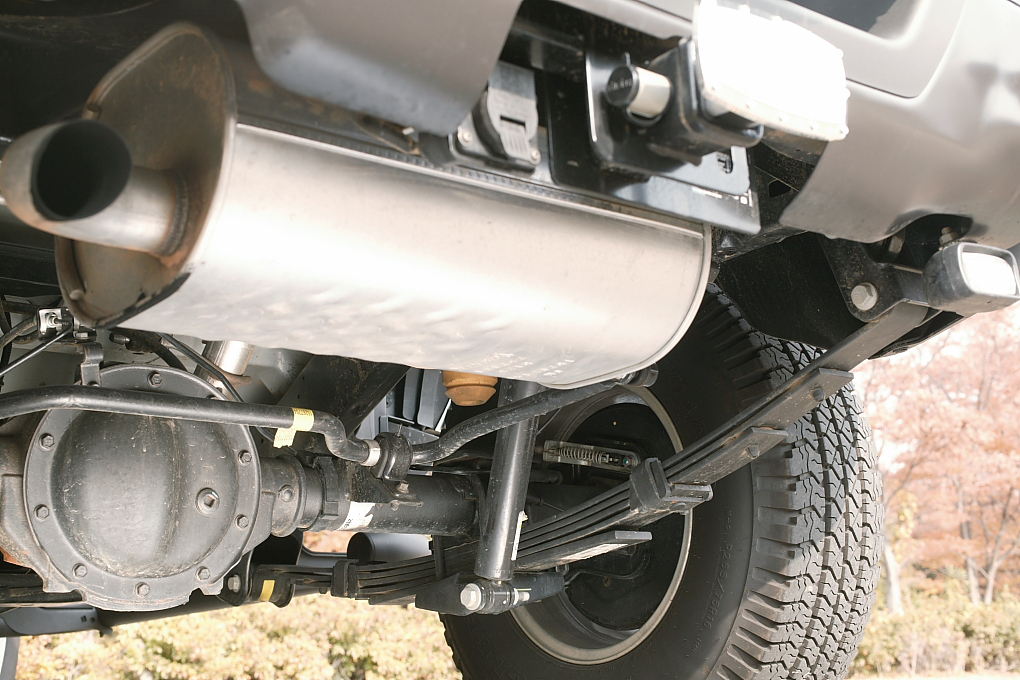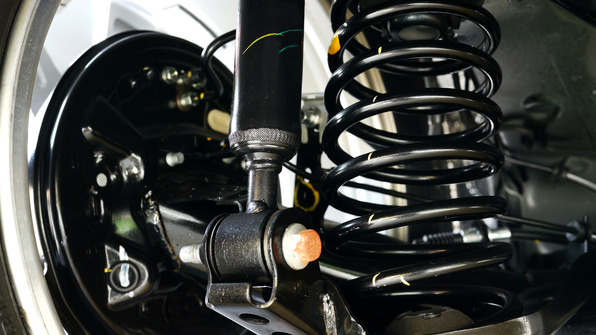Thanks to an automotive technology called shocks, we enjoy a more comfortable and controlled ride. It wasn’t always like that, because back when cars were still relatively new machines the ride was bouncy and rough.
Automobile Shocks: How They Work
The common misconception is that car shock absorbers actually support the vehicle’s weight, but that’s far from the truth. What they really do is control any movement in the suspension and springs. To get a little scientific, shocks do this by taking  the movement or kinetic energy and converting it into heat. That energy is stored inside the shocks’ hydraulic fluid, before escaping into the surrounding air.
the movement or kinetic energy and converting it into heat. That energy is stored inside the shocks’ hydraulic fluid, before escaping into the surrounding air.
If you were to cut a car shock in half lengthwise, you’d see a cross section of how it works. There’s a long piston rod with a piston on one end, which sits flush with the walls of the shock cylinder or pressure tube. Hydraulic fluid sits inside as well.
When the car drivers over a pothole or bump, the piston is forced up and down in the pressure tube. Small holes in the piston, called orifices, allow the hydraulic fluid to pass through. Because the flow is only slight, thanks to the size of the orifices, the shocks are able to absorb the energy transferred from the suspension and vehicle springs.
All shocks provide greater resistance the faster the suspension bounces. This allows for adjustments based on different surfaces, making for a more comfortable ride quality on rough pavement Of course, not all shock absorbers are made equal. Some provide more resistance than others, thanks to factors like the size and number of piston orifices.
Automobile Shocks: Recognizing Trouble
Now that you have a basic understanding of what shocks are and how they work, you’re ready to learn the different warning signs that they need to be replaced. Failure to replace worn shock absorbers not only means you’ll be enduring a rougher ride; it can also lead to damage as the undercarriage comes into contact with the road. That’s why you should always be watching for these warning signs, the taking action as soon as they crop up.
You should know that shocks don’t just suddenly wear out. It happens gradually over time, so you might not realize what’s going on until they’re pretty far gone. That’s why when you’re in doubt, have a trained auto tech take a look to see if the shocks are bad enough to justify swapping them out, preventing serious damage.
 Also, know that you can’t just replace your shocks after a set number of miles. How quickly they wear depends on how you drive your car, what the roads are like where you live, etc.
Also, know that you can’t just replace your shocks after a set number of miles. How quickly they wear depends on how you drive your car, what the roads are like where you live, etc.
One of the telltale signs of worn shock absorbers is a bouncier ride. If you notice that when you go over bumps in the road, your car dives up and down wildly, that means you need to have the shocks inspected. The problem could also manifest when you drive over a series of small bumps or ripples in a road, with the traction control system light flickering on in the instrument cluster as one or more wheels literally bounces up and down while struggling to attain enough grip.
Most people realize that bottoming-out is a bad thing, so that’s perhaps the most obvious sign of worn shocks. The problem usually first manifests when you go over railroad tracks or have trouble with steep driveway skirts.
If you hear a strange sound whenever the car goes over a bump, that also can signal trouble. As the shocks age and reach the end of their life, they can begin creaking, popping or making other noises that let you know it’s time to have them replaced.
When you hit the brakes hard, like during a panic stop, your car might lean forward slightly before coming to a complete stop. If the front end dives down hard, that can be a sign of worn shocks. The same is true with what’s called acceleration squat. If when you accelerate hard, the back end of the vehicle sinks down, that’s not a good sign.
Too much body lean is another indication something’s wrong. When they’re in good condition, a vehicle’s shocks regulate at least some of the body lean, which boosts handling ability and comfort when navigating through turns.
Perform This Simple Test
You can perform a simple test at home to tell if the shocks on your vehicle are worn enough that they need to be replaced. Push down as hard as you can at each corner of the car, then let go abruptly. If after you release the vehicle it keeps bouncing, you likely need new shocks.
T3 Atlanta
The only way to tell for sure if a vehicle’s shock need to be replaced is to have a highly skilled technician look at them. At T3 Atlanta we have all of the necessary equipment and training to take great care of your car.










Leave a Reply
You must be logged in to post a comment.